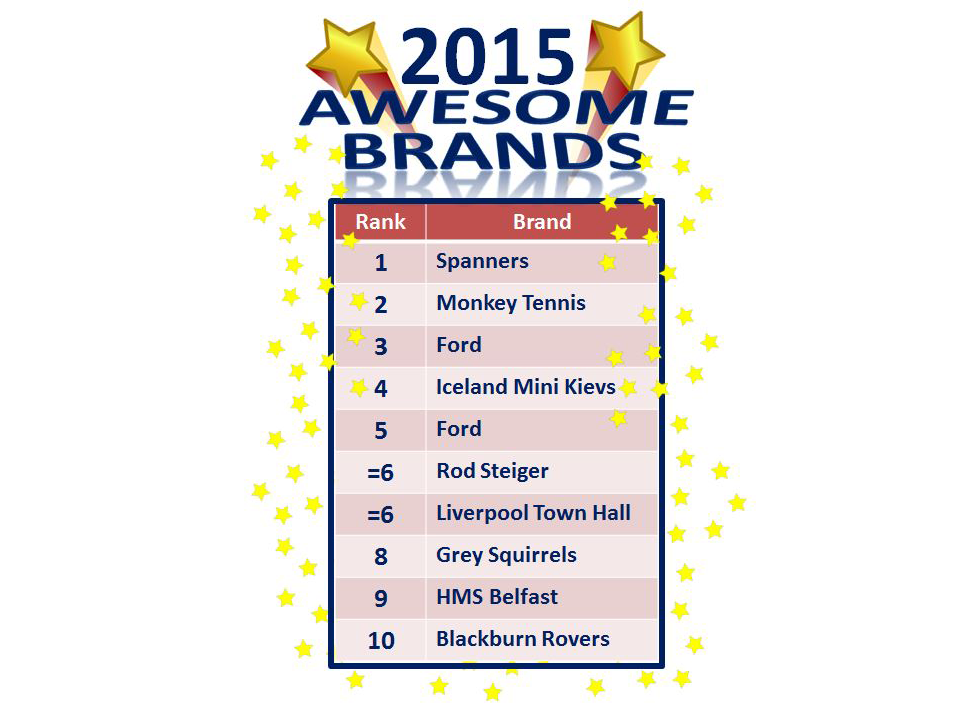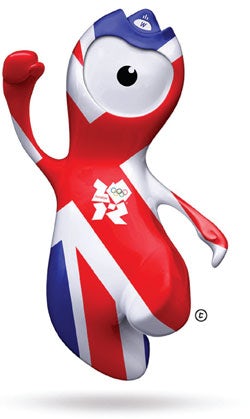10 Years of Ritson: The wit and wisdom of Mark Ritson
To mark Mark Ritson’s 10th anniversary as a Marketing Week columnist, we have pulled out some of his most memorable putdowns and observations.
 Over the past 10 years, Mark Ritson has beguiled Marketing Week readers with his marketing expertise and unique brand of humour. As entertaining as he is authoritative, his acerbic tongue has cut through even the most complex marketing theories.
Over the past 10 years, Mark Ritson has beguiled Marketing Week readers with his marketing expertise and unique brand of humour. As entertaining as he is authoritative, his acerbic tongue has cut through even the most complex marketing theories.
We’ve already rounded up Ritson’s 10 biggest columns – and the poll is now open for you to vote for you favourite. Now we have pulled out some of his most memorable thoughts and observations.
Get ready for the wit and wisdom of Ritson.
‘CoolBrands’ bananas methodology is a stain on modern branding’
Over the years Ritson has taken aim at various brand valuation companies, arguing that if they can’t agree on the value of something within $100bn then “it’s time to declare the value of valuation to be nil”.
“In my usual understated style, I suggested that despite the power and prestige of big valuation firms Interbrand, Millward Brown and Brand Finance, there was a possibility that much of what they do was bollocks,” he said.
But it was perhaps CoolBrands that felt the wrath of Ritson most, when in 2015 he called the “bananas methodology” used to produce its list of the 20 ‘coolest’ brands “a stain on modern branding”. He made further mockery of the analysis by coming up with his own ranking system called AwesomeBrands.
“My methodology involves first asking my dad and his mate Brian to drink a whole bottle of whisky. Then I ask them to create a list of 100 brands by shouting random words into Google’s voice recognition software while the Shirley Bassey hit ‘Goldfinger’ plays at full volume in the background.
“Finally, my dog Asia eats the list of brands and I await the resulting shortlist appearing on my front garden approximately six to eight hours later. So, here they are, direct from Asia, this year’s Top 10 AwesomeBrands. I thank you.”

READ MORE: CoolBrands’ bananas methodology is a stain on modern branding
‘Millennials are out; blah blahs are your next target group’

In case you’re not aware, Ritson is not a fan of millennials. Time and again he’s called out marketers for classing millennials as a segment and has suggested anyone “dumb enough” to think this 14 million-strong group qualifies as such should get their head examined.
“If you buy the idea of millennials, then you must, by definition, reject the concept of proper segmentation and of consumers holding different perceptions and experiences,” he said. “Millennials are essentially the same. They all have 0.3 kids, two-thirds of a degree and one testicle each. Whether they went to private school, have a same-sex orientation, have used your brand before, are female – all of that is trumped by their birth year and the cod-psychology of a bunch of assumptions about their demographically driven motivations.”
He went on to suggest the most disturbing problem with millennials is the fact marketers focus on them at the expense of their “more populous, financially bestowed peers who happen to be – look away now – old”.
“The only thing that will kill our obsession with millennials is the deadening certainty that we are only a few months away from a new demographic cohort called Blah-Blahs or Generation Q, who will supplant the now over-the-hill millennials and surprise us with their, you guessed it, discomfort with modern career paths and concern for the environment and social justice.”
READ MORE: Millennials are out; blah blahs are your next target group
‘Why does the London 2012 Olympic mascot look like a penis?’
Remember the mascot for the London 2012 Olympic Games? Wenlock was his name and according to Ritson he looks just like a penis.

Recalling his astonishment at the mascot’s unveiling, Ritson said: “As a voiceover explained that the figure with the helmet-like head, single eye and dual appendages around his base was Wenlock, I was struck with a single, horrifying realisation: yes, but he looks like a penis.”
Following the launch, a poll by EMR revealed 49% of marketing professionals approved of Wenlock and 30% actually preferred the new mascot to the Olympic logo.
“Proof positive, if any were needed, that around half of the British marketing population are total morons. And a galling statistic for you, dear reader, because that means there is only a 50-50 chance that you yourself are not an idiot.
“The only way to safely confirm your worth is to gaze at the grotesque image [above] and ask yourself whether it makes any sense,” he said.
READ MORE: Why does the London 2012 Olympic mascot look like a penis?
‘Ernst & Young’s rebrand raises more than a snigger’
Then there was Ernst & Young’s rebrand to EY, and the fact its new name was also that of a gay magazine.
“One might have expected one of the world’s biggest audit firms to, er… audit the EY brand name prior to embarking on such a major global rebranding,” said Ritson.
“Granted, checking brand names is a complex business and I make no apology if some readers get a little lost with my how-to. First you have to open Google on your desktop. Next you have to type in ‘EY’ (remembering the speech marks and to also press enter). And third, you then have to see what pops up.

“Had Ernst & Young actually completed the above brand audit it would very quickly have discovered that what ‘pops up’ when you search for EY is a series of terrifically appealing images of young, limber men in swimwear.
“Long before Ernst & Young entertained the idea of an abbreviated name, EY! had existed as a gay magazine. EY! is the brainchild of Spanish creative director Luis Venegas and features young men with washboard stomachs and tight swimwear who seem to spend their days smiling, vigorously and placing their hands demurely over their genitals. I am reliably informed EY! is about as cool as it gets when it comes to gay soft porn.”
READ MORE: Ernst & Young’s rebrand raises more than a snigger
‘Accept it, people hate ads – yes, all of them’
 One thing Ritson has reminded marketers of time and again is the fact brands do not play as big a role in consumers’ lives as they think they do and people generally couldn’t care less about advertising.
One thing Ritson has reminded marketers of time and again is the fact brands do not play as big a role in consumers’ lives as they think they do and people generally couldn’t care less about advertising.
“Addled brand managers want to promote a brand purpose of relieving societal friction; consumers just want to stop the buttock-chafing when they go to the gym. Brands are little, little things. Realism is the route to better brand management and more success,” he said. “And the same goes for advertising. People hate it. Good ads. Bad ads. All ads.
“Maybe, if you are lucky, they don’t give a fuck about your advertising. Like a turd on the footpath that people avoid in order to get on with their day. Deal with that reality. Welcome it. Plan for it. Say it at conferences. Accept the shitness of what you do. It will make you a better marketer. It will enable you to make better ads.
“And people still won’t notice. Or care.”
READ MORE: Accept it, people hate ads – yes, all of them
‘An unlikely vision of the future from the Consumer Electronics Show’
 Earlier this year, Ritson did something completely out of character. He highlighted three mind-blowing innovations he said would “change the face of marketing forever”.
Earlier this year, Ritson did something completely out of character. He highlighted three mind-blowing innovations he said would “change the face of marketing forever”.
From the disposable eco-tablet codenamed Accessible Four (‘A4’ for short) and the voice protocol hardware that allows people to speak to each other in real time, to the automatic conveyance technology known as ‘belts’, Ritson rounded up the hottest new inventions.
“The new A4 is extraordinarily thin – literally the width of a single sheet of paper. It’s also very light – an average user could carry dozens of these devices in their suitcase without any issue. The A4 is also surprisingly versatile,” he gushed.
He went on to explain how these radical innovations would displace old models and why the near future for consumers would be “very, very different from the past”.
“With so many bold new inventions emerging across tech, retail and lifestyle sectors it is truly time for marketers to accept that the old models and traditional ways of operating are very much things of the past. The next step in human evolution is made up of A4 tablets, voice protocol technology and peer-to-peer service optimisation.”
Clearly Ritson didn’t actually attend CES (although not all our dear readers caught on immediately) and he was instead making a mockery of the endless assertions that the latest tech is going to change the world forever.
READ MORE: An unlikely vision of the future from the Consumer Electronics Show
‘Heineken should remember marketing is about profit, not purpose’

Brand purpose is another recurring bugbear, especially when brands choose purpose at the expense of growing awareness, driving preference and ultimately increasing sales.
“I grow sick and tired of the apparent lack of commercial focus that grips our discipline,” Ritson said following the launch of one such campaign – Heineken’s ‘Open Your World’.
“Brands have switched from an overt commercial focus to an abstract, belief-based approach for a number of reasons. First, marketing is soft and full of people that don’t even understand gross profit, let alone possess the desire to increase it.
“Second, most marketers are incredibly embarrassed to admit they spend 40 hours a week getting people to consume more of something. That’s achingly uncool and sounds appallingly prosaic. Imagine telling someone at a dinner party in W1 that you work very hard to get people to drink more of your beer each week. That would be a nightmare.
“But if I can talk about my work to create films that bring people together and reduce hate crimes and environmental destruction even Jane, the woman who works for Médecins Sans Frontières, will approve and perhaps be my friend.”
READ MORE: Heineken should remember marketing is about profit, not purpose





